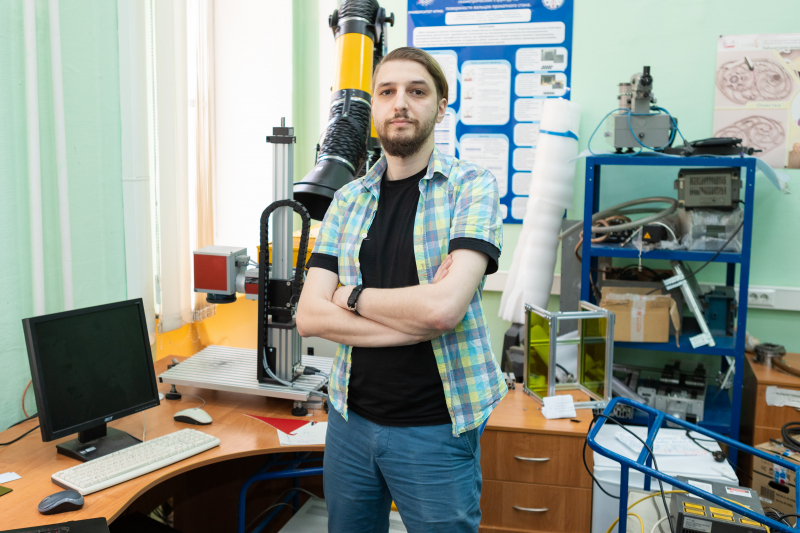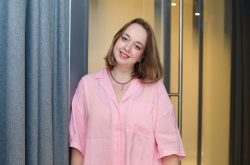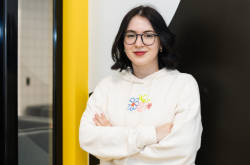Dmitry, you’ve been teaching for over 12 years now. How did you get into this field?
It all started when I was still a Master’s student. Once, I was offered to co-organize the first school of laser technologies, ITMO students' initiative that was supported by our faculty. There, wetaught school students the shortened version of our own curriculum and thus improved our teaching and team management skills. At first, we only had students from St. Petersburg but over time, we started to invite people from other Russia’s regions and even the CIS countries, too. Much later, when I had already been working at ITMO for a few years, I was asked to be a curator and lecturer at one of the faculty’s events, namely, the laboratory of creative laser solutions.
As a PhD student, I started teaching university students and got to hold seminars in laser technologies, which I still enjoy, and some other disciplines, too. Along with my classes, I was also a research supervisor.
You’re not only a lecturer but also a researcher. What do you do at the lab?
Generally speaking, our lab specializes in laser processing of materials. For instance, we develop laser methods to provide surface wear resistance, hydrophobicity, and hydrophilicity. For example, laser exposure can make the surface of materials less homogeneous and smooth, meaning that when a water drop is placed on such a surface, it doesn’t go inside the product but stays on its surface or slides off. This technology can be used to collect moisture and protect materials from biocontaminants, ice, and corrosion. My colleagues are working on special surfaces for dental implants, which are already on the market. In this case, hydrophilicity helps gums adapt to implants, whereas hydrophobicity produces a bactericidal effect.
Yet right now I’m primarily engaged in methods to control the formation of thermochemical laser-induced periodic surface structures for their use in modern photonics. Basically, I do laser thermochemistry, that is, I apply laser radiation to control the chemical composition on the surface of the treated material. This can be achieved by adding graphite to titanium to increase its wear resistance, depositing copper conductive structures in special solutions, and sometimes by developing thin glass spheres from ceramics. Plus, there’s recording of laser-induced periodic surface structures (LIPSS). The thing is, laser radiation can cause a spontaneous formation of submicron periodic lattice inside materials, which can superficially resemble a rainbow on a glass or a metal. With this technology, scientists can produce holographic and diffractive elements for a wide range of functional systems, including strain gauges.

The formation of thin glass spheres. Photo courtesy of Dmitry Sinev
Do you primarily consider yourself a researcher or a lecturer?
I think I am first and foremost a lecturer. These past few years, students and staff began to see science as an exciting and relevant field, where you can always find some support. However, scientists are also often under pressure: they are expected to do research, write “enough” articles, and publish them in top-ranked journals. Meanwhile, prospective researchers can’t acquire the so-needed background and flexibility without practice-oriented classes. That’s why I prefer to teach more. I enjoy seeing my students’ reactions during my classes. I share my knowledge and, in return, I get to see how they learn something new. I also enjoy the educational process in general, especially witnessing how they’re becoming better specialists each day.
What is the most important thing about teaching?
First and foremost, I don’t want my students to simply pass an exam, I want them to understand what we discussed and what we learned it for. In doing so, I try to use different practices and gradually introduce more complex terms and concepts to make sure they understand everything. Then, I prefer to trust my students. Say, if a student cheated yet admitted it and said they want to figure it out themselves, I will respect their decision and help them with the task. Just like many other teachers, I encourage my students to ask questions (there’s no such thing as a silly question) and see a university as a place where students can learn how to study and if the lecturer offers knowledge, you should do your best to accept it.
I remember this one thought from The Hero with a Thousand Faces by mythologist Joseph Campbell, which I think describes teaching best. It goes like this “the first encounter of the hero-journey is with a protective figure who provides the adventurer with amulets against the dragon forces he is about to pass”. This is what Merlin does in The Story of King Arthur and His Knights, as well as a nameless cat in Neil Gaiman's Coraline, and John Keating in Dead Poets Society. I like this idea and I believe it relates best to my teaching methods. Our students will face “dragons” outside the university and teachers can only offer them “amulets”, aka skills and knowledge, to help them overcome any obstacles.
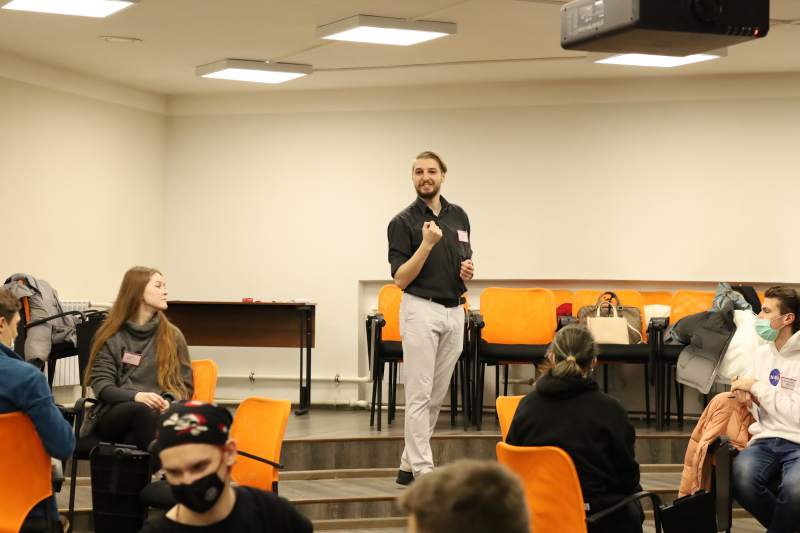
Dmitry Sinev’s class. Photo courtesy of the subject
You’ve once said that the educational model based on the cult of success will inevitably lead to procrastination. Why do you think so and which one do you prefer more?
This system works for some students. They find it quite fitting and convenient for them. They achieve their KPIs in studies and research and thus advance on the corporate ladder. They are satisfied when they work well. For example, they will feel good if they get a grant today but to feel even better tomorrow, they will need to win two grants, and so on.
However, my colleagues and I are not very fond of this system and believe there’s a better one. It’s okay not to chase degrees and live your life simply enjoying what you do without regret or shame. People who live like this don't care about performance indicators but focus on their self-development.
If you ask me, I think that it’s important to help both types of people unleash their potential. While achievers keep science and economics going by producing results and solving problems, those who focus on becoming the best version of themselves give meaning to this movement and invest in scientific activities. This is a crucial social role that is often forgotten.
Let me tell you a story. When I’m teaching Bachelor’s students, I’m using Vadim Veiko’s exercise book Laser Technologies in Tasks and Examples. One of the tasks from it isto determine the divergence of laser radiation so that the beam would be focused on the surface of Phobos. All these years, I discussed this problem with my students and together we came up with different unconventional solutions. It was so until one of my students said that they didn’t understand the point of this task at all. This was because the problem in question was about the international space program Phobos, which was developed by ITMO University and its Faculty of Quantum Electronics in 1988. So, we spent the next class trying to find a way to formulate this task differently. And then a wonderful thing happened – we’ve got not one but five solutions, each accurate and well-thought. From that moment on, I offered my students only the updated version of the task.
What are you proud of most in your work?
The students whose theses I supervised are frequent winners of the grant competition for students in St. Petersburg organized by the Committee on Science and Higher Education. Last year, for instance, my students Ekaterina Avilova, Alexey Chebotarev, and Daria Yuzhakova received a grant to implement their lab projects. After that, Ekaterina and Alexey’s projects (about laser copper deposition and laser sensor development, respectively) earned them grants for Master’s and PhD students, and Ksenia Egorova made it to the final round of the Umnik contest. Now, all three successfully manage their own student teams. However, these are, first and foremost, their personal merits and I support this.
As one of my personal achievements, I’d mention my contribution to students’ professional growth and my title of a two-time winner of the ITMO.EduStars contest. Just like many of my colleagues, I see this title as living proof that I’m on the right track. I’ve been thinking a lot about what my students enjoy in my classes. I’d like to think that they appreciate my attempts to explain the material and answer all their questions but I’m pretty sure that it’s also about the memes I included in each of my presentations. Some funny images encourage students to go to the board, while others show that some tasks are not as complex as they might seem.
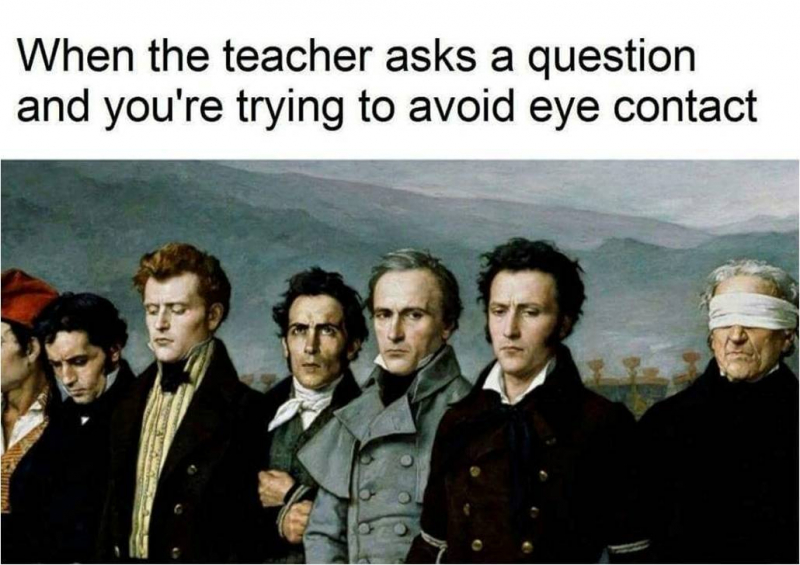
A meme from Dmitry Sinev’s presentations. Photo courtesy of Dmitry Sinev
What do you like to do in your spare time?
Whenever I can, I travel, read, listen to music, and play video games, mostly strategies. I enjoy such city builders as Surviving Mars and Cities: Skylines, as well as co-op and single-player RPGs like Don’t Starve Together, Overcooked, The Elder Scrolls V: Skyrim, and Assassin's Creed Valhalla. I also love watching TV series but only with subtitles on. My favorite is The Expanse.
